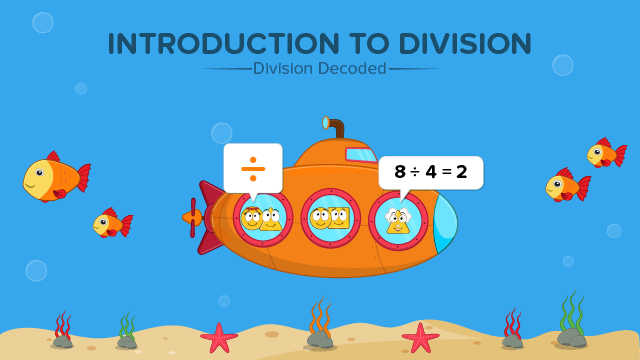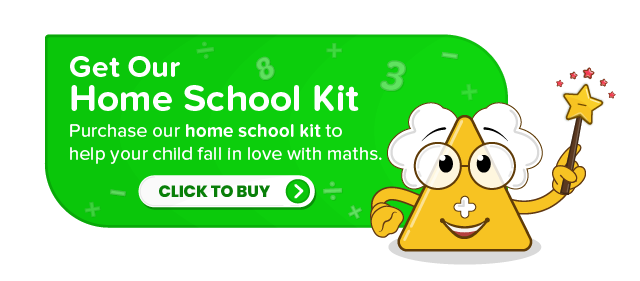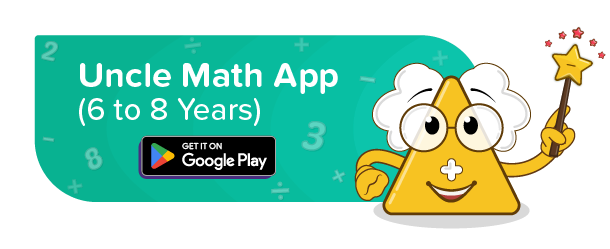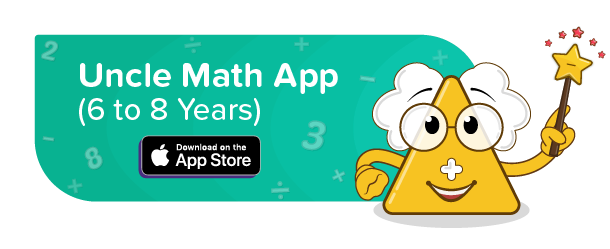Division

What is division?
– Division is the process of breaking a number into equal parts and finding how many equal parts can be made.
– We indicate division using ➗.
– We can easily divide using repeated subtraction.
– Repeated subtraction is a method of subtracting an equal number of items from a larger group.
How to teach division?
Before children practice division problems, they need to understand the concept of division. The best way to explain division is to introduce the idea of sharing. Begin by explaining how a number of items can be shared equally between groups, and give them examples. You might show them how six cookies can be given to three children so each of them has two, or how someone with eight apples could give four each to two friends.
Single-digit division:
Step 1: Using concrete methods.
Introduce repeated subtraction and equal grouping through objects or toys. The purpose here is to show the students that instead of repeatedly subtracting 4, five times (10-2, 8-2, 6-2, 4-2, 2-2), they can write 10➗2. Emphasize the fact that 10➗ 2 means 10 can be divided into 5 equal groups of 42 This way they understand that division is a shortcut method and will give results faster.
Step 2: Using the representational method
Now that students can relate division with objects, we can shift that to using representations like dots, lines etc. Let them choose their own symbol. Give them a problem and let them solve it by equal sharing using representations.
Step 3: Using the abstract method:
Now let them use only numbers to divide. Make students write the division facts using repeated subtraction.
Step 4: Introduce the number line
Number line also helps students visualize division in an effective way as they can clearly see the grouping on it.
Step 5: Simple word problems
Once students have understood the meaning of division, it’s important they see its real-life application of it as well. Word problems not only raise the rigour but also are best for real-life scenario exposure. Give them, simple word problems like: I have 15 of red balls, and I want to divide it equally among 3 friends. How many red balls will each of them get?
Long division method:
Once students have mastered single-digit division using repeated subtraction, it’s a good time to introduce the long division method to them.
Note:
A dividend indicates the total number of objects. Division indicates a total number of equal groups. Quotient indicates how many items are in each group.
Relation between multiplication and division:
– Multiplication and Division are inverse operations, which means they are opposites.
– We can use multiplication to get division answers and use division to get
multiplication answers.
– We can undo a division using multiplication and undo a multiplication using division.
Different ways of teaching division:
Teaching through stories:
1. Squarho’s Sunday Special
2. Atriho Boss And His Revenge
Teaching through games:
a) Book cricket: This is one of the most popular games in elementary school. When students actually calculate the required run rates etc in each game they get extremely fluent with division.
Teaching through activities:
a) At home: Involve students in day-to-day activities like distributing rotis/bread at the dinner table, sharing toys, sharing snacks with siblings and friends etc every time ask: How much did each get when you divided equally?
b) Fire in the mountain, run run:
A classic game! This has been children’s favourite for ages. Make the entire classroom form a circle. Write the total number of students on the board.
– Sing fire in the mountain run, run and students will run.
– Shout a number, eg: 4. Now students will have to divide themselves into groups of 4.
– Stop and see how many groups were formed. Write the equation on the board. Eg: if there were 20 students. 20/4 =5.
– If students remain, write that as the remainder.
– Continue with different equations and grouping.
– You can also eliminate remainders.




